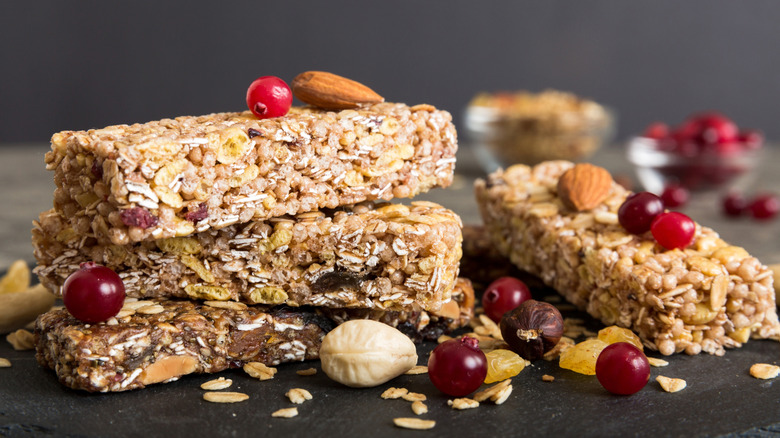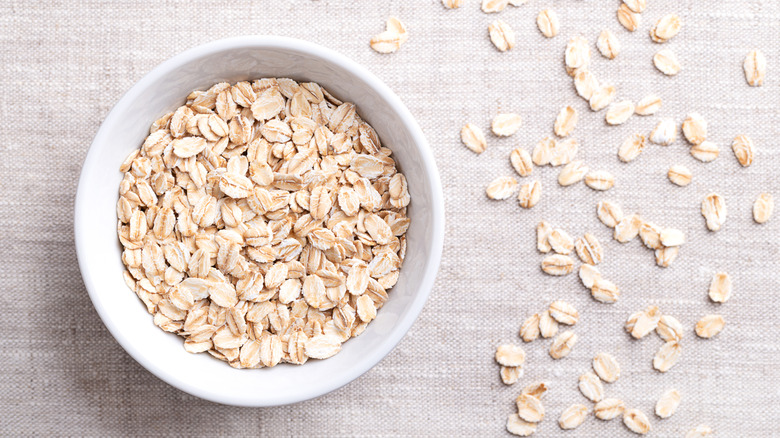The Step You Shouldn't Be Skipping For The Crunchiest Granola Bars
When you want the crunchiest homemade granola bars, it's important to squeeze out every last drop of moisture. However, David Davidov, creator of The Cooking Foodie, spoke exclusively with Food Republic to tell us that a quick toasting not only removes excess water, but also evolves your oats' flavor into something far more delicious than store-bought varieties.
"The natural oils in nuts and seeds are coaxed out, enhancing their nuttiness, while oats develop a subtle caramelized sweetness and crunch," Davidov says. "In my kitchen, I always toast before mixing because it creates a richer base flavor that makes homemade granola or granola bars taste like they came from a high-end bakery." Much like how heat affects the flavor release of spices, bringing that flavor to the surface of your oats is the best way to maximize their taste. While there's nothing wrong with dumping all sorts of fruit, sugars, or confections into the mix, Davidov says this small step dramatically improves the base of your granola bars: the grains.
Toasting your homemade oatmeal deepens its flavor, and this applies to granola bars just as much. Caramelized sugars and a complete lack of moisture join forces to deliver a powerful crunch and flavor, but you have to get the temperature and timing just right. If you get it right, Davidov says that this step "separates a decent granola bar from one that people can't stop talking about."
How to toast oats for perfect granola bars
According to David Davidov, temperature and timing are everything for the perfect toasted oats. While not toasting your oats is a mistake everyone makes when cooking oatmeal, getting it just right gives you something cheaper, better, and more tailored to your tastes than anything else you could hope to find in a store.
"At 325 degrees Fahrenheit, you have a gentler, more forgiving heat — great for larger pans or when you're multitasking in the kitchen," Davidov says. "At 350 degrees Fahrenheit, the flavor develops a bit faster and deeper, but you'll want to keep a closer eye on it." Davidov also encourages you to spread your oats in a single layer on a baking sheet, stirring them roughly every 10 minutes to give them an even color. After 20 or 30 minutes, you should have a perfect pan of oaty deliciousness ready for your recipe.
Davidov also warns that there's very little strict timing when it comes to toasting oats. "The most important tip? Trust your senses," he shares, "the moment you catch that warm, nutty aroma, they're ready." Different types of oats with their own drying methods and added ingredients have their own needs. Learning how to accommodate them may take some trial and error, but you'll ultimately be better off taking them out of the oven once that aroma hits you than from watching a clock.


